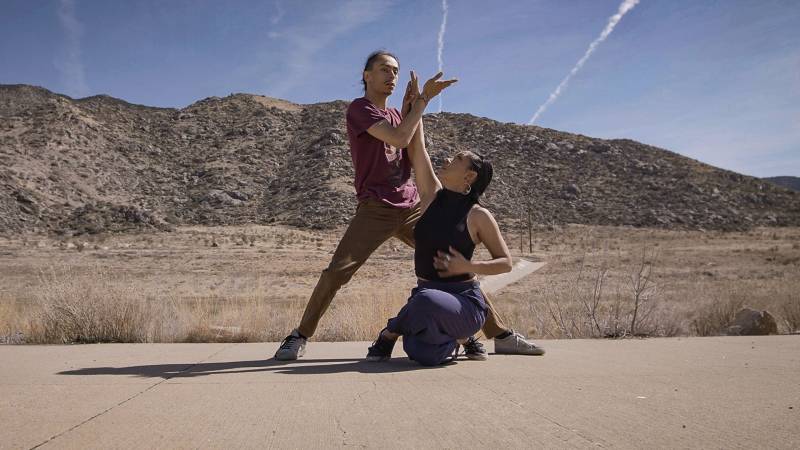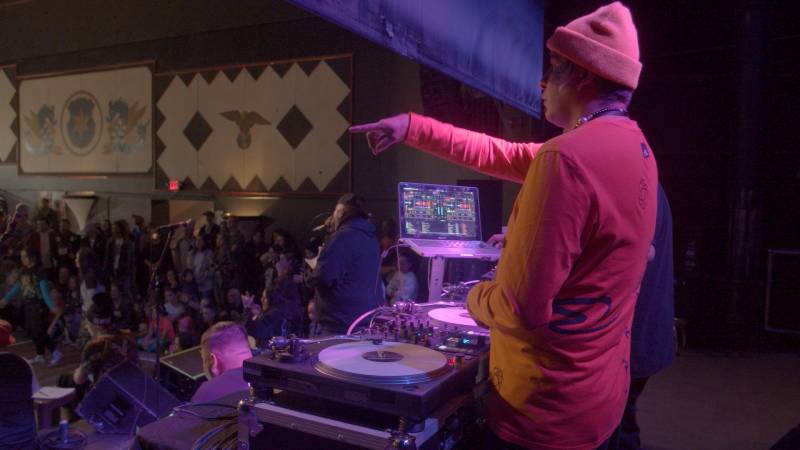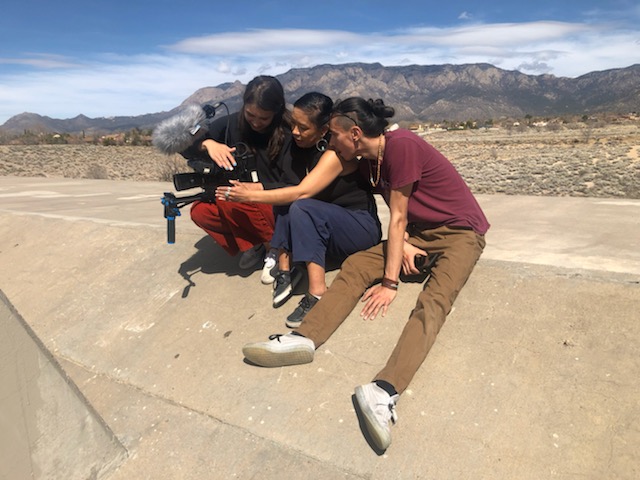Editor’s note: KQED Arts’ award-winning video series If Cities Could Dance is back for a third season! In each episode, meet dancers across the country representing their city’s signature moves. New episodes premiere every two weeks. Download Content Description.
“Never trust a spiritual leader who cannot dance,” says Randy L. Barton, a.k.a. Randy Boogie (Diné), a multidisciplinary artist, dancer, DJ and early figure in the Southwestern hip-hop scene. It’s simultaneously a joke and a serious statement: dance is a time-honored expression of community. And over time, hip-hop has become another reason to gather, the music and dance forms intimately entwined—for performers like Anne Pesata and Raven Bright—with their Indigenous identity.
“There’s all these different styles within this community [of people] who are all expressing their love for hip-hop within the same environment as is in powwow,” says Pesata (Jicarilla Apache), who describes the scene as inter-tribal.
The city of Albuquerque, on occupied Tewa lands, figures prominently in creating this inter-tribal dynamic. It’s a place where Indigenous people of different backgrounds—the state is home to 19 Pueblos, three Apache tribes and the Navajo Nation—gather to share their cultures and experiences.

Albuquerque is also where Pesata met Raven Bright (Diné) at Breakin’ Hearts, an annual dance battle, their dance partnership later becoming a relationship. Both dancers are shy by nature, but the warmth of Albuquerque’s dance community brought them out of their shells. “I didn’t want to be judged,” says Pesata of her tendency to keep her dancing private. “Learning that other people did the same thing, but in front of others, was shocking to me. To see so many people sharing it and being creative with one another so openly—it was really inspiring.”
Their stories start in different places. Pesata, who grew up on the Jicarilla Apache reservation in Dulce, participated in traditional dance ceremonies and powwows from a young age. Hip-hop always spoke to her, she says, in a way pop music never did. “Hip-hop is made by the people, for the people,” she says. “Hip-hop is definitely its own culture and it definitely comes from specific places, inner city experiences. But there’s something about the things that they talk about, the struggles that they go through…being from the rez, I experienced similar things.”
Meanwhile, Bright grew up 200 miles away, in the border town of Gallup, and didn’t connect to his Indigenous heritage (his father is Diné, or Navajo, and his mother is white) until later, when he began to spend more time on the Navajo reservation. “There were two separate worlds,” Bright says of Gallup and the reservation, “and being able to be a part of hip-hop culture helped me connect those worlds together.”

Randy Boogie is part of Bright’s story—the two met in Gallup when Randy was doing hip-hop workshops with his Indigenous dance crew Foundations of Freedom, which he started in 2002. Bright is part of the crew’s second generation. At gatherings like The Sacred Cypher, an event where ceremony, hip-hop and powwow cultures unite. For Randy, the connections between Indigenous traditions and hip-hop are obvious: “The DJ is the drumming. The emcee is the chanting. The graffiti art is the petroglyphs.”

This expansion on what Indigenous dance is and can be is at the heart of Pesata and Bright’s freestyle movements, which are informed by hip-hop as much as they are by contemporary Indigenous dance. Both are members of Dancing Earth, a dance company founded by Rulan Tangen that brings performers together from many Indigenous communities. Recent productions have explored renewable energy and Indigenous ecological knowledge with movements decolonized from Western forms.
To Pesata and Bright, the dance style they’ve developed isn’t just about honoring the past, but creating a base for the future, one that doesn’t rely on narrow definitions and stereotypes—for art forms or people. “When I dance I am experiencing the relationship with the music,” Pesata says. “So putting a label and a name on something that’s that personal and that spiritual is kind of a disservice.”
In the end, Bright agrees, it’s about finding oneself through movement and music: “When you go out into a circle and move your body, that’s the truest form of yourself that you’re giving off.” — Text by Sarah Hotchkiss
Explore our virtual story map and learn more about the murals and locations featured in this episode of If Cities Could Dance.

